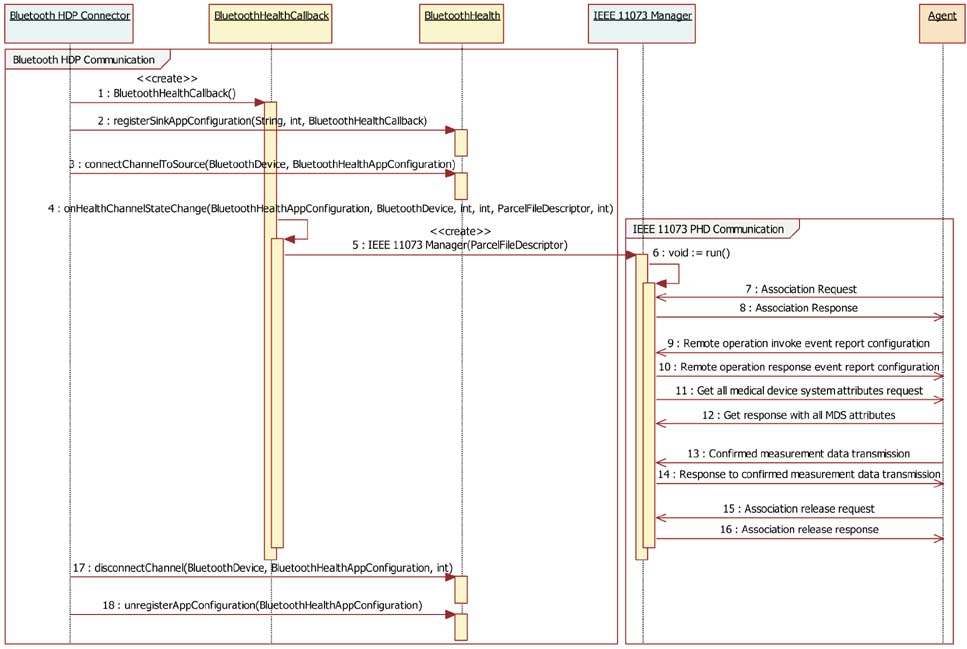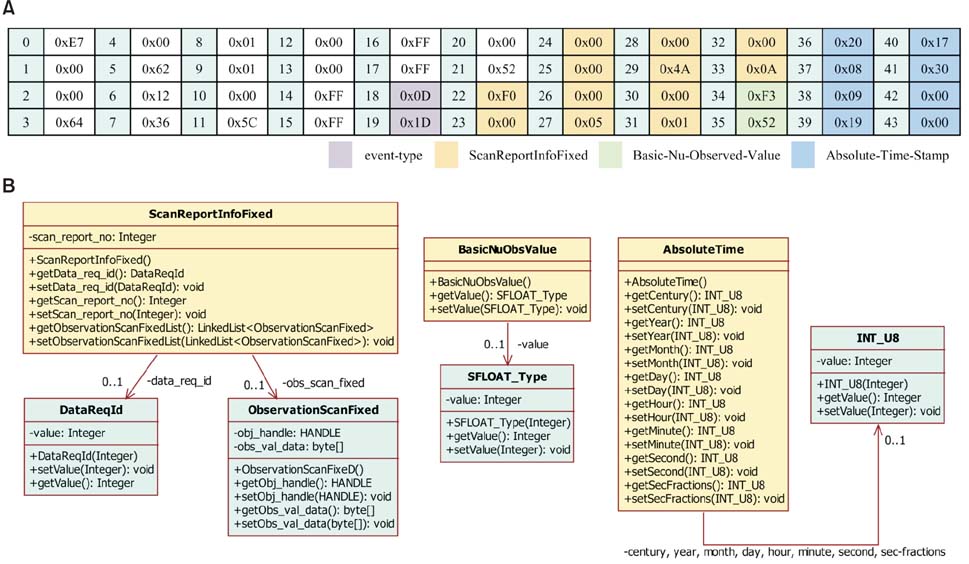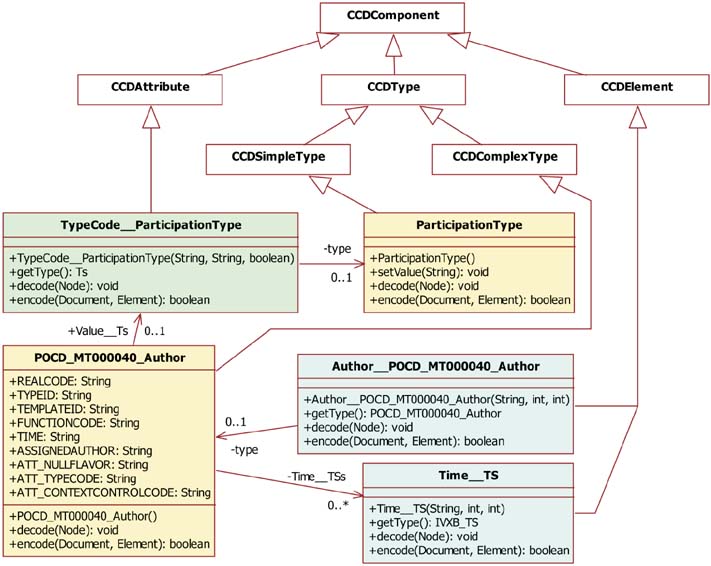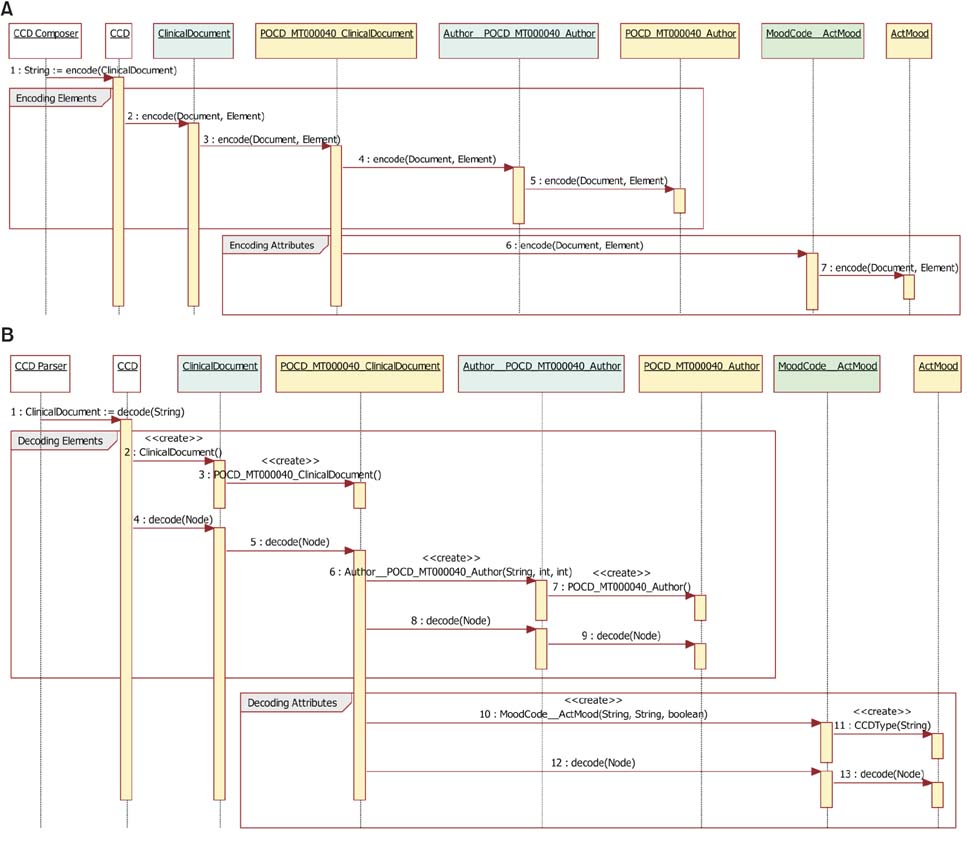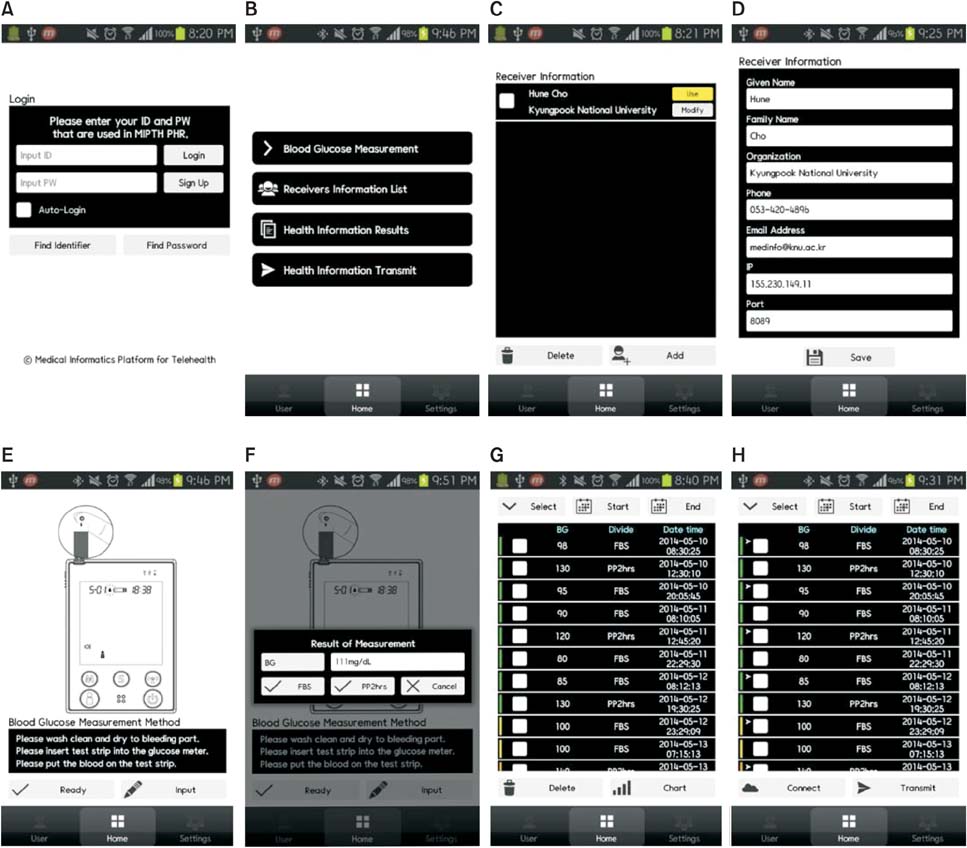Healthc Inform Res.
2015 Apr;21(2):83-94. 10.4258/hir.2015.21.2.83.
Development of Cell Phone Application for Blood Glucose Self-Monitoring Based on ISO/IEEE 11073 and HL7 CCD
- Affiliations
-
- 1Department of Medical Informatics, Kyungpook National University, Daegu, Korea.
- 2Department of Medical information Technology, Daegu Haany University, Gyeongsan, Korea. pulala@paran.com
- KMID: 2284611
- DOI: http://doi.org/10.4258/hir.2015.21.2.83
Abstract
OBJECTIVES
The objectives of this research were to develop and evaluate a cell phone application based on the standard protocol for personal health devices and the standard information model for personal health records to support effective blood glucose management and standardized service for patients with diabetes.
METHODS
An application was developed for Android 4.0.3. In addition, an IEEE 11073 Manager, Medical Device Encoding Rule, and Bluetooth Health Device Profile Connector were developed for standardized health communication with a glucometer, and a Continuity of Care Document (CCD) Composer and CCD Parser were developed for CCD document exchange. The developed application was evaluated by five healthcare professionals and 87 users through a questionnaire comprising the following variables: usage intention, effort expectancy, social influence, facilitating condition, perceived risk, and voluntariness.
RESULTS
As a result of the evaluation of usability, it was confirmed that the developed application is useful for blood glucose self-monitoring by diabetic patients. In particular, the healthcare professionals stated their own views that the application is useful to observe the trends in blood glucose change through the automatic function which records a blood glucose level measured using Bluetooth function, and the function which checks accumulated records of blood glucose levels. Also, a result of the evaluation of usage intention was 3.52 +/- 0.42 out of 5 points.
CONCLUSIONS
The application developed by our research team was confirmed by the verification of healthcare professionals that accurate feedback can be provided to healthcare professionals during the management of diabetic patients or education for glucose management.
MeSH Terms
Figure
Reference
-
1. American Diabetes Association. Standards of medical care in diabetes-2013. Diabetes Care. 2013; 36 Suppl 1. S11–S66.2. Statistics Korea. 2012 Cause of death statistics. Daejeon, Korea: Statistics Korea;2012.3. Park SK, Park MK, Suk JH, Kim MK, Kim YK, Kim IJ, et al. Cause-of-death trends for diabetes mellitus over 10 years. Korean Diabetes J. 2009; 33(1):65–72.4. Korean Diabetes Association. Diabetes fact sheet in Korea 2013. Seoul, Korea: Korea Diabetes Association;2014.5. Yoon KH, Lee JH, Kim JW, Cho JH, Choi YH, Ko SH, et al. Epidemic obesity and type 2 diabetes in Asia. Lancet. 2006; 368(9548):1681–1688.
Article6. Edelman SV. Importance of glucose control. Med Clin North Am. 1998; 82(4):665–687.
Article7. The Diabetes Control and Complications Trial Research Group. The effect of intensive treatment of diabetes on the development and progression of long-term complications in insulin-dependent diabetes mellitus. N Engl J Med. 1993; 329(14):977–986.8. Korea National Diabetes Program. Education guidelines for the treatment of diabetes. Seoul, Korea: Korea National Diabetes Program;2008.9. Cameron C, Coyle D, Ur E, Klarenbach S. Cost-effectiveness of self-monitoring of blood glucose in patients with type 2 diabetes mellitus managed without insulin. CMAJ. 2010; 182(1):28–34.
Article10. Korean Diabetes Association. Clinical practice guideline. Seoul, Korea: Korean Diabetes Association;2013.11. National Health Insurance Service. 2012 National Health Insurance Statistical Yearbook. Seoul, Korea: National Health Insurance Service;2013.12. Centers for Disease Control and Prevention. National diabetes fact sheet: national estimates and general information on diabetes and prediabetes in the United States, 2011. Atlanta (GA): US Department of Health and Human Services;Centers for Disease Control and Prevention;2011.13. Lee SH. Sociocultural impact and evolution of mobile health. Jincheon-gun, Korea: Korea Information Society Development Institute;2013.14. Jung KT. Trend and prospect of healthcare wearable device. Cheongju, Korea: Korea Health Industry Development Institute;2013.15. Kang SI. A study on oximetry system based on ISO/IEEE 11073 using smart-phone. J Korea Inst Inf Commun Eng. 2013; 17(8):1940–1946.
Article16. Cho KL, Kim SY, Kim JH, Oh AS, Kim GH, Jean JH, et al. u-Healthcare Monitoring System Design using by Smartphone based on Bluetooth Health Device Profile. J Korea Inst Inf Commun Eng. 2013; 17(6):1365–1369.
Article17. Kang SI, Oh AS. A design and implementation of mobile healthcare system based on smart gateway. J Korea Inst Inf Commun Eng. 2012; 16(9):1970–1976.
Article18. Park YJ, Cho HS, Son JW. Transmitting/receiving of standard health data using Bluetooth HDP on the Android platform. J Korean Inst Commun Inf Sci. 2013; 38C(5):464–470.
Article19. Oh AS. A study on standardized healthcare system based on HL7. J Korea Inst Inf Commun Eng. 2013; 17(3):656–664.
Article20. HealthUp [Internet]. Seoul, Korea: OpenIt Inc;c2015. cited at 2015 Apr 20. Available from: https://www.openit.co.kr/business/medicalHealth/healthup.21. myFitnessCompanion [Internet]. Sydney, Australia: myFitnessCompanion;c2015. cited at 2015 Apr 20. Available from: http://www.myfitnesscompanion.com/.22. Institute of Electrical and Electronics Engineers. ISO/IEEE 11073-20601 Standard for Health Informatics - Personal health device communication - Application profile - Optimized exchange protocol. New York (NY): Institute of Electrical and Electronics Engineers;2009. (ISO/IEEE FDIS 11073-20601).23. Park HN, Kim SH, Yoo DS. Present status and analysis for IEEE 11073 personal health device specializations. J Korean Inst Commun Inf Sci. 2012; 37C(6):469–475.
Article24. Health Level Seven International. HL7 Implementation Guide: CDA Release 2 - Continuity of Care Document (CCD). Ann Arbor (MI): Health Level Seven International;2007.25. Lupse O, Vida M, Stoicu-Tivadar L, Stoicu-Tivadar V. Using HL7 CDA and CCD standards to improve communication between healthcare information systems. In : Proceedings of 2011 IEEE 9th International Symposium on Intelligent Systems and Informatics (SISY); 2011 Sep 8-10; Subotica, Serbia. p. 453–457.26. US Department of Health and Human Services. Health information technology: initial set of standards, implementation specifications, and certification criteria for electronic health record technology (45 CFR Part 170). Washington (DC): Office of the National Coordinator for Health Information Technology;Department of Health and Human Services;2010.27. Lee IK, Cho H, Kim HS. Development of a management tool of CCD/CCR-centric standard clinical document. J Korean Inst Intell Syst. 2012; 22(4):507–514.
Article28. Venkatesh V, Morris MG, Davis GB, Davis FD. User acceptance of information technology: toward a unified view. MIS Q. 2003; 27(3):425–478.
Article29. Fora D40d [Internet]. Moorpark (CA): Fora Care Inc;c2013. cited at 2014 May 8. Available from: http://www.foracare.com/Blood-Pressure-D40.html.
- Full Text Links
- Actions
-
Cited
- CITED
-
- Close
- Share
- Similar articles
-
- Comparison and Analysis of ISO/IEEE 11073, IHE PCD-01, and HL7 FHIR Messages for Personal Health Devices
- Introduction of the Communication Standard Health Level Seven and HL7 Korea
- Application of Continuous Glucose Monitoring System (CGMS) and Patient Education
- The Effect of Cellular Phone-Based Telemedicine on Glycemic Control in Type 2 Diabetes Patients Using Insulin Therapy
- Analytic Performance Evaluation of Blood Monitoring System G400 according to ISO 15197:2013


